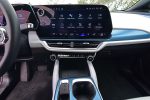
GM Doubles Down on Dropping CarPlay, Betting Big on a Custom In-Car Experience Without The Integration
In a recent Decoder interview on The Verge, GM’s senior vice president of software and services, Baris Cetinok, made a strong case for the automaker’s polarizing decision to forgo Apple CarPlay and Android Auto in many of its upcoming models, especially electric vehicles (EVs). Despite the criticism, Cetinok insists that GM’s strategy of prioritizing its custom-built software platform, Ultifi, will enable the company to deliver a more cohesive, innovative in-car experience tailored specifically for GM drivers.
Why Ditch CarPlay? The GM Vision Explained
CarPlay and Android Auto have become mainstays in the automotive industry, winning over drivers with their seamless smartphone integration and familiar interfaces. But according to Cetinok, GM’s decision to abandon these platforms isn’t about dismissing user preferences. Instead, it’s about pushing the limits of what in-car technology can achieve when an automaker has complete control over the software ecosystem. Cetinok pointed out that relying on third-party platforms like Apple and Google places limits on how quickly GM can innovate and evolve the driver experience, especially as these companies’ technologies don’t always align with GM’s goals or roadmaps.
Instead, GM plans to move forward with its proprietary Ultifi platform, designed to work in sync with GM’s systems to offer a distinctively GM-tailored experience. Ultifi represents GM’s vision of a holistic digital environment, handling everything from navigation to multimedia and vehicle settings within a framework they fully control. Cetinok emphasized that by owning the software experience from end to end, GM will have more freedom to bring cutting-edge features to its users, ranging from better-integrated safety functions to new entertainment options that go beyond what CarPlay or Android Auto can offer.
The Challenges of Going Solo in a Car Software-Dependent World
Though GM’s decision has drawn comparisons to newer automakers like Rivian, who also prioritize in-house systems, GM’s approach has its unique set of challenges. Unlike Rivian, which built its software from scratch as a newcomer to the industry, GM must retrofit its software strategy across an extensive lineup of existing models and brands — no easy feat for an established legacy automaker.
In the interview, Cetinok discussed the practical hurdles of managing this vast ecosystem. Ultifi, which currently incorporates Google built-in as a core component, resembles an “Android tablet on wheels,” as Cetinok describes it. But with this setup, GM must handle the complexities that come with Android’s expansive ecosystem, like ensuring ample memory and processing power for long-term use while keeping up with rapidly advancing user demands. These are significant technical requirements, considering how frequently software capabilities and consumer expectations are evolving.
Building Ultifi: A Tightly Integrated Platform to Rival the Tech Giants
Cetinok’s goal is for Ultifi to eventually become a viable replacement for CarPlay and Android Auto, especially in the eyes of drivers who’ve become dependent on these platforms. He envisions Ultifi as more than just an infotainment system; it’s designed as a complete, dynamic experience that continually adapts to each driver’s needs. For GM, this approach extends far beyond infotainment; Ultifi will ultimately serve as the backbone for managing everything from vehicle diagnostics to safety and convenience features.
Another part of GM’s reasoning is to retain direct ownership of valuable user data, which is increasingly becoming a priority as connected cars open up new business opportunities. With control over both hardware and software, GM can create a tighter feedback loop to improve its vehicles and integrate new technologies faster than if it relied on third-party ecosystems.
What This Means for Consumers and GM’s Future
While some drivers may find it hard to imagine life without their favorite smartphone projection systems, GM is betting on a future where a custom, highly responsive in-car platform can more than compensate for the absence of CarPlay and Android Auto. Cetinok remains optimistic that Ultifi’s flexibility and potential for deep integration with GM’s hardware will ultimately win over drivers.
Ultimately, GM’s decision to go its own way reflects the company’s high confidence in its strategy to reassert control over the driver experience. As more automakers push toward similar goals, we may see an industry shift where proprietary software becomes a differentiating factor rather than a detractor — but only time will tell if GM’s bold move pays off in a market that’s accustomed to CarPlay and Android Auto as the industry standard.

